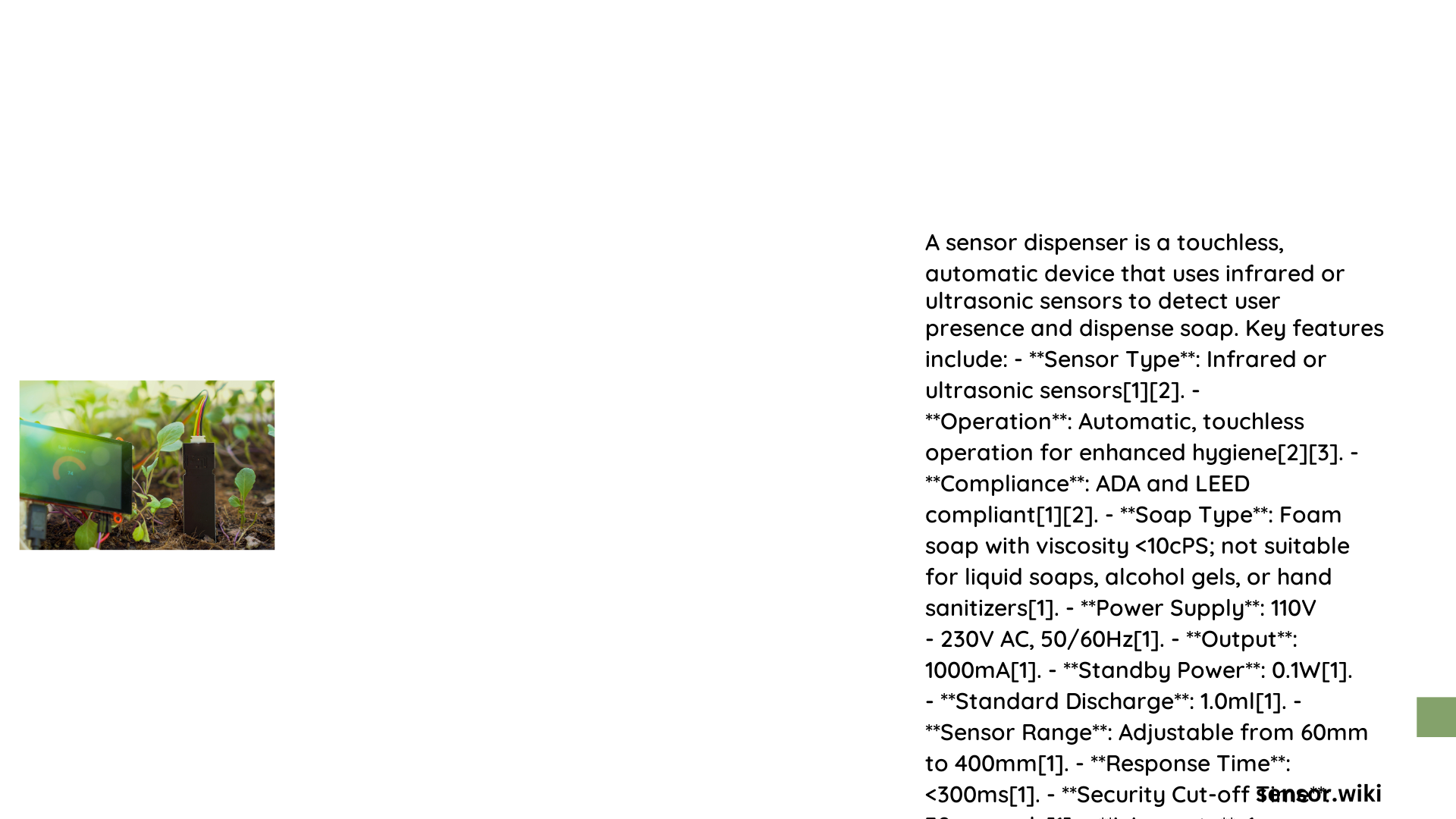Sensor dispensers represent a cutting-edge solution in hand hygiene technology, offering touchless operation that minimizes cross-contamination and enhances user experience. These innovative devices utilize advanced sensor mechanisms to detect hand proximity, automatically dispensing soap or sanitizer with precision and efficiency. From healthcare facilities to public restrooms, sensor dispensers have revolutionized hand washing practices by providing a seamless, hygienic interaction.
What Are Sensor Dispensers?
Sensor dispensers are advanced technological devices designed to automatically release soap, sanitizer, or other liquid substances without physical contact. These smart devices use various sensor technologies to detect hand presence and trigger dispensing mechanisms.
How Do Sensor Dispensers Work?
Sensor dispensers typically employ two primary detection technologies:
- Infrared Sensors
- Detect heat signatures
- Trigger dispensing when hands enter detection zone
-
Highly responsive and accurate
-
Ultrasonic Sensors
- Use sound wave reflections
- Measure distance and hand movement
- Provide broader detection range
What Sensor Technologies Are Available?

| Sensor Type | Detection Method | Accuracy | Typical Use Case |
|---|---|---|---|
| Infrared | Heat Signature | High | Restrooms, Kitchens |
| Ultrasonic | Sound Wave Reflection | Medium-High | Public Spaces |
| Capacitive | Electrical Field Disruption | Medium | Limited Applications |
What Factors Influence Sensor Dispenser Performance?
Detection Range Considerations
- Typical Range: 2-6 inches from sensor
- Factors Affecting Range:
- Sensor quality
- Installation height
- Environmental conditions
- Sensor calibration
Power and Battery Management
- Power Sources:
- Battery-operated
- Hard-wired electrical
- Solar-powered options
How to Choose the Right Sensor Dispenser?
Key Selection Criteria
- Usage Environment
- Commercial vs. residential
- Traffic volume
-
Hygiene requirements
-
Technical Specifications
- Detection range
- Response time
- Dispensing volume
-
Battery life
-
Maintenance Requirements
- Ease of cleaning
- Replacement part availability
- Warranty coverage
Installation Best Practices
Recommended Installation Steps
- Select appropriate location
- Ensure proper mounting height (30-40 inches)
- Verify level and stable surface
- Connect power/battery source
- Test sensor functionality
- Calibrate detection range
Maintenance and Troubleshooting
Common Maintenance Tasks
- Regular sensor cleaning
- Battery replacement
- Soap reservoir refilling
- Periodic sensor calibration
Troubleshooting Checklist
- Check battery levels
- Verify sensor alignment
- Clean sensor surface
- Inspect dispensing mechanism
- Update firmware (if applicable)
Cost Considerations
Pricing Factors
- Initial Investment: $50 – $300
- Installation Costs: $50 – $200
- Annual Maintenance: $20 – $100
Future of Sensor Dispensers
Emerging trends include:
– IoT integration
– Advanced analytics
– Sustainable materials
– Enhanced hygiene tracking
Conclusion
Sensor dispensers represent a critical innovation in hand hygiene technology, offering unparalleled convenience, efficiency, and cleanliness across various settings.
